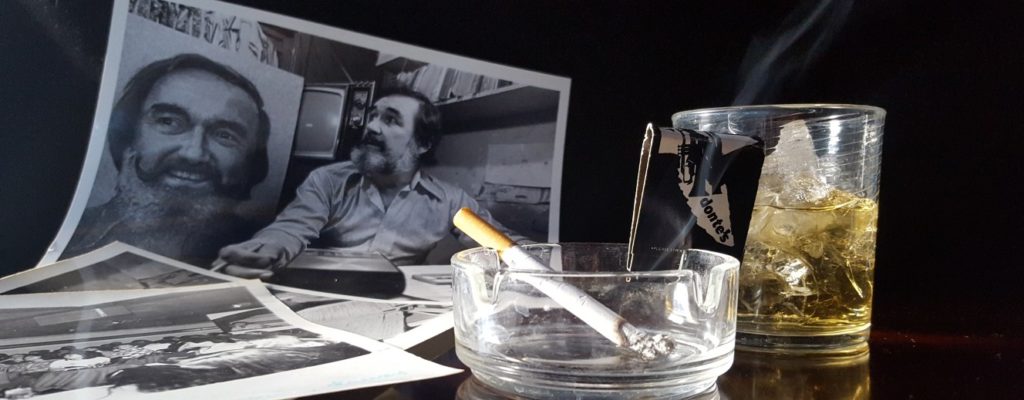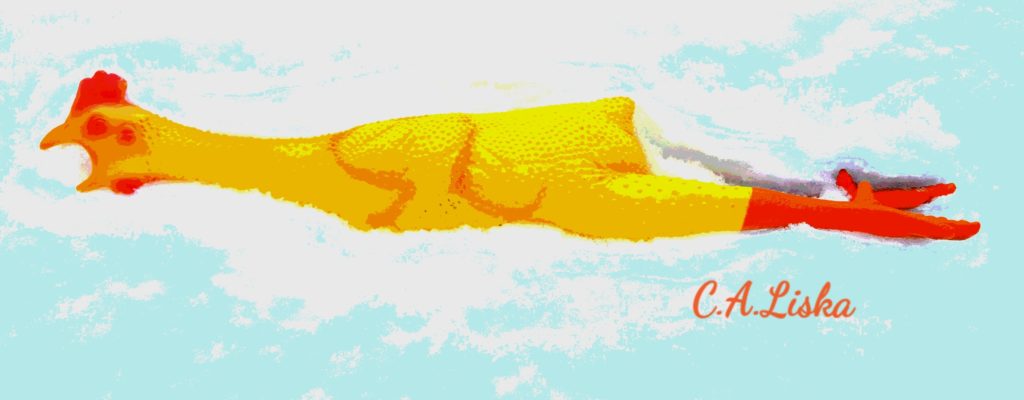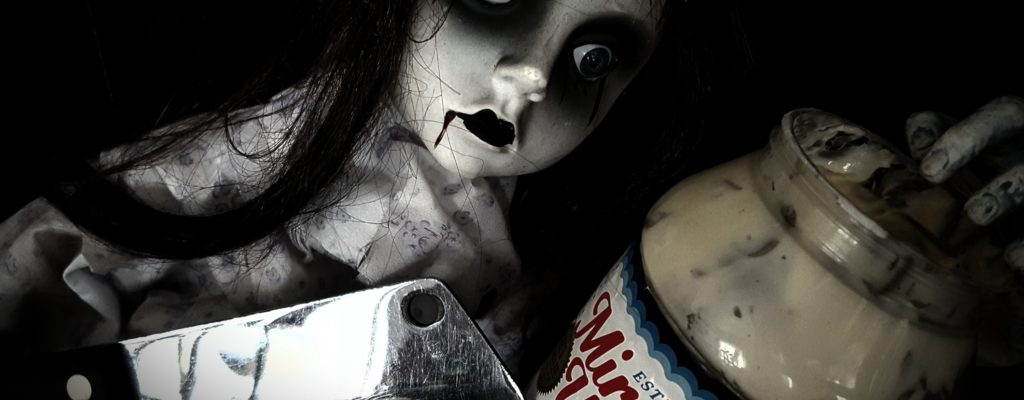After seventeen years of playing drums professionally in a variety of musical settings, I decided that I could best serve jazz—my first love—by writing about it.
I played my final gig in Rantoul, Illinois, on the same day as I had taken my final college final. There was more than a mere hint of finality that June day in 1976. I was about to turn 25, I had earned a degree in journalism from the University of Illinois, and I didn’t have a clue about how to become a jazz writer.
I found myself in Los Angeles later that summer and got a job as a reporter with the Valley News & Green Sheet, a controlled-distribution, i.e., free, four-day daily newspaper based in Van Nuys. The paper recently had been purchased by the Chicago Tribune Company, which had sent a trio of wunderkind executives to overhaul the paper by improving its standing in the profession, expanding its print schedule to seven days, and charging for it.
The changes were accomplished quickly and deftly and it was exciting to be part of a growing concern. (The name-change to the Los Angeles Daily News was accomplished by a voice vote in the editorial department, the only holdout being from our lead political reporter, the curmudgeonly John Marelius.) The newsroom was packed with enterprising young reporters and seasoned veterans, most of who drank too much.
I was made a consumer reporter, my job being to find unhappy consumers and expose the unscrupulous people who made them unhappy. I was eager to finagle a way to cover jazz for the paper.
It didn’t take long for me to become friends with Rick Sherwood, a contemporary who worked in the Features section of the paper. I told Rick (aka Bingo), who would become my son’s godfather and provide the financial security for our restaurant venture many years later, of my desire to write about jazz. He thought it was a good idea and within a few days I was contributing album reviews. I soon had a weekly column about jazz and I was spending my evenings covering jazz at the Lighthouse, the Parisian Room (so new was I to Los Angeles that in a mostly negative review of the pianist Gene Harris I had written that the club was in Santa Monica, rather than in a world away in the Crenshaw District), Concerts-by-the-Sea and the Baked Potato. At the Money Tree in Toluca Lake I first heard the magnificent jazz singer Mike Campbell, who became a lifelong friend, and the house bassist, Eugene “Senator” Wright, who had retired from the Dave Brubeck Quartet.
But it was at Donte’s, a world-class jazz club on Lankershim Boulevard in North Hollywood, that I found my second home.
In the late fall of 1976 I introduced myself to the club’s owner, Carey Leverette, as the Valley News jazz critic.
I don’t think the gray-bearded Leverette—a film choreographer whose Manhattan rearing, Fordham University education and Guadalcanal war experiences as a U.S. Marine had never included anything approaching jazz, let alone running a nightclub—ever had heard of the Valley News, but he was gracious, seated me at the end of the long, red-leather banquette that faced the stage and sent a waitress, B.J., to take my order. I had a Johnny Walker Red on the rocks, ordered the New York strip steak, which happened to be the best steak I had ever had, and listened to the extraordinary guitarist Joe Pass.
It’s been my experience that nightclubs are generally bad places to eat. The focus is clearly on the entertainment and the alcohol sales, and not necessarily in that order. Donte’s was unusual in that everything that came out of the impossibly tiny kitchen was outstanding.
It was a short, simple menu of steaks, chops and seafood that was handled by a single cook.
From its opening in 1966 to its closing in 1988, it was the premiere place to play in Los Angeles. Donte’s was a small club that made every performance an intimate experience that both musicians and audiences loved.
I could fill countless pages with the names of the musicians I heard over my twelve-year span of attendance there, but suffice it to say that any traveling jazz musician who worked nightclubs worked at Donte’s in those days. It was also a haven for comics. Mort Sahl, a jazz comic if ever there was one, was a regular performer there. Redd Foxx worked the room. And the likes of Clint Eastwood, Mel Brooks and Anne Bancroft, Shari Lewis, Jack Riley, Johnny Carson, Frank Sinatra and Steve Allen were audience regulars–if you loved jazz, you went to Donte’s. And New Year’s Eve just wasn’t the same after Art Pepper died in 1982.
Carey and I became great friends. Early on I had a crush on his daughter, Heidi, and I became an admirer of her husband, the alto saxophonist Dick Spencer. Carey never questioned any of my critical opinions and only once offered any advice: “Just spell the names right.”
Every year on Donte’s anniversary, Carey would have the critics, radio DJs and a few of the stars work as waiters and bartenders for the night. It was great fun and the musicians took their turns at giving the critics and jocks as hard a time as possible. (I’m probably one of the very few who can say I waited tables with Al Jarreau.)
Carey and I would frequently go to restaurants together. He’d have heard of the opening of a new one and off we’d go, usually accompanied by his longtime cook, José, a burly Latino who would pluck clams out of the steamer with his bare, calloused fingers. I spent some time in the kitchen over those years.
My routine would be to listen intently to the first set of a show, take my notes, speak to the musicians during the break and leave as the second set would be starting. Frequently I’d hang out for another set (and sometimes yet another), but officially I was done listening too critically after the first set. I could tell when the kitchen was getting backed up and I’d sidle in to ask if I could help. I’d plate linguine and clams for José (I used tongs) and wash dishes or scrub pots, and take out the garbage. It was fun.
Freddie Hubbard, the great trumpet player, used to get food from Donte’s all the time—to go. One night I got to the club and Carey said, “Let’s go up to Freddie’s house.” Driving the few miles up into the Hollywood Hills I asked Carey the purpose of the trip. “I’m out of god-damned plates…they’re all at Freddie’s.”
We retrieved the plates, loaded them into the kitchen and started washing. Carey suggested we reward ourselves with steak dinners. The New York is what I almost always had and I asked how he did them.
“First, you buy the best steak that’s available,” he said, adding that he bought Prime grade beef. “Then you do as little as possible to it.”
With that, Carey liberally seasoned two, inch-and-a-half-thick steaks with salt and pepper. He placed them on a scorching hot grill, turned them after about two minutes, seared the other side for another two minutes and placed them into a large, cast-iron frying pan. He added a knob of butter on each and splashed them with port wine. Into the 500-degree oven they went. Five or six minutes later, they were resting on plates, perfectly rare and perfectly delicious.
It might be difficult to image a dark-and-smoky nightclub as being a “family” place, but in its own way Donte’s certainly was. Players and others would meet there for a taste, some jokes, gossip and conversation, and Bob Powell, the bartender, would play LPs from the vast collection. The sense of compassion and genuine concern for each other was quite real in the jazz community and for several years Donte’s played host to it.
I had become a regular at Donte’s before I met Geri and many of our first dates were there. Carey adored her and the friends in the jazz world that I had made were quick to embrace her as well. She felt as much at home there as I did.
Our daughter, Courtney, was born with a serious heart defect and the Los Angeles jazz community rallied around her (us), hosting a benefit for her* at the Hollywood Palladium (Doc Severinsen and the Tonight Show band, Jack Lemmon, Edie Adams, Don Menza, Steve Allen and Rosemary Clooney headlined) and offering tremendous financial and emotional support. The bandleader and trumpeter Bill Berry was also on the bill and he and his wife, Betty, even arranged for us to stay at Dizzy Gillespie’s suite at the Copley Hotel in Boston while Courtney was at Children’s Hospital. Dizzy’s “manager,” Charlie the Whale, was our chauffeur, driving us around Boston in his oddly decorated ’67 Chevy Impala.
It had all started with the friends we had made at Donte’s.
Every year around Christmas, Carey hosted a party for forty or so people. It was always on a Sunday and the tables would be pushed together. The food was pretty typical holiday fare, served family style, and everybody brought something to share.
Courtney was not quite two when we went to one year’s gathering. I was sitting next to my friend and mentor, the jazz critic Leonard Feather, with Courtney sitting between me and Geri. Being age two meant being antsy and Courtney left the table, only to crawl onto the stage and onto the bench in front of the piano. The next thing, Courtney was pounding on the piano as only a two-year-old could.
I was mortified. Teddy Wilson, the great pianist who had been part of the Benny Goodman Quartet with Lionel Hampton and Gene Krupa, had played on that very Steinway the night before and there was Courtney pounding away with complete abandon. I thought it was some form of sacrilege. Leonard told me to relax. Conversation stopped and a roomful of some of the world’s most famous jazz musicians, including Teddy Wilson, sat and listened.
The recital lasted a minute or two—to me, it seemed like a bad forty-minute set—and the applause was thunderous. Her debut complete, this Donte’s family finished dinner.
*That benefit concert at the Hollywood Palladium was held on October 30, 1983. It also benefited Jason Rosolino, whose father, the trombonist Frank Rosolino, shot both of his sons before taking his own life on November 26, 1978. Justin, age nine, died. Jason, age seven, was left blinded.
Photography and staging by Courtney A. Liska


